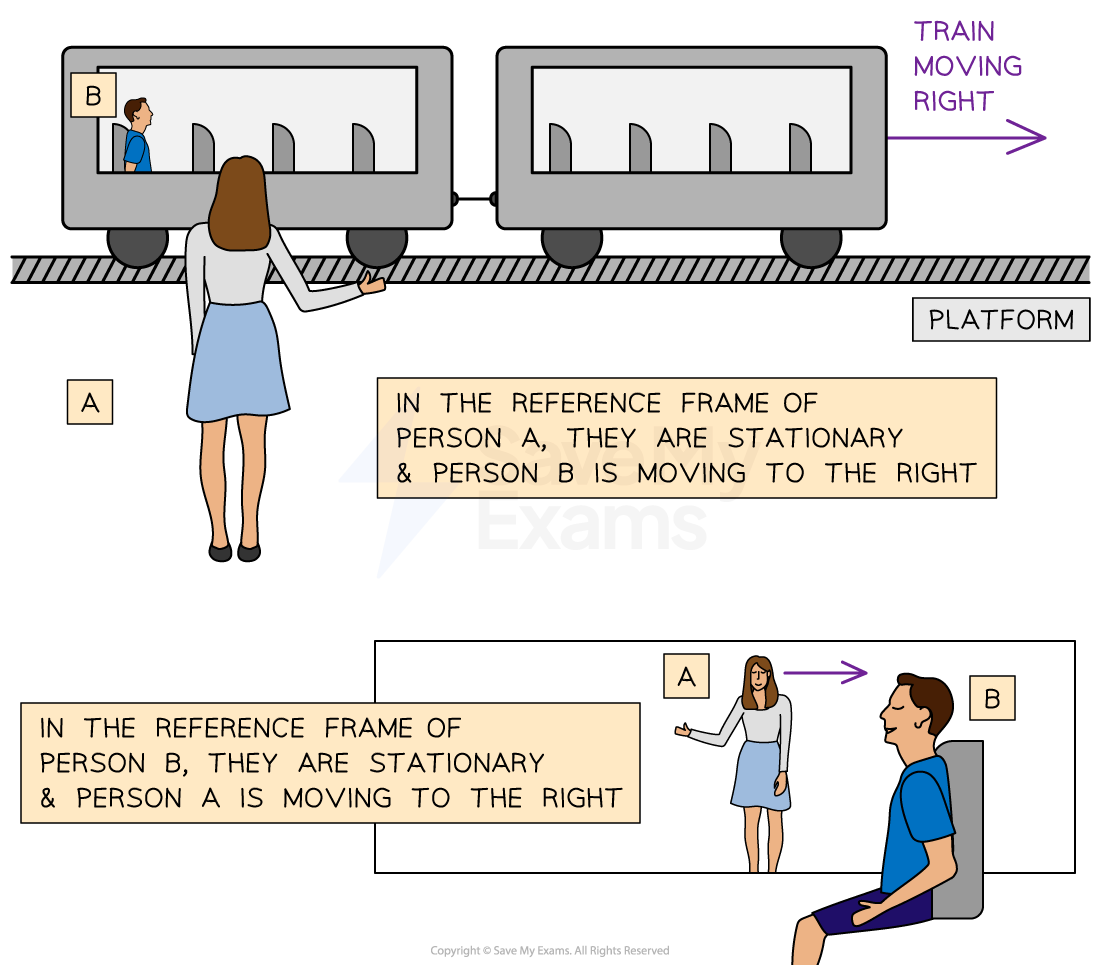Reference Frames & Relative Motion (College Board AP® Physics 1: Algebra-Based): Study Guide
Reference frames & relative motion
A reference frame, or frame of reference is defined as:
A coordinate system in which an observer makes position and time measurements of physical events
All objects in the universe are moving relative to each other
For example, a person sitting at a desk may describe themselves as stationary; however, planet Earth is currently:
rotating on its axis at 1600 kilometers per hour
orbiting the Sun at 107 000 kilometers per hour
Therefore, measurements like position and velocity can be different depending on the reference frame from which they are measured
Direction in reference frames
The direction of motion of an object can be different in different reference frames
For example, a car is driving down a road and two people are standing on opposite sides of that road
The person on one side of the road would say the car is moving to the right, and the person on the other side of the road would say the car is moving to the left
Both are correct, but they are viewing the car's motion from different frames of reference
Diagram showing different frames of reference for a moving car

Motion in reference frames
Motion itself can be relative, depending on the frame of reference
For example, a train passes through a station; Person A is on the platform and Person B is on the train
Person A, on the platform, views Person B, on the train, moving to the right
According to Person A, they, themselves, are stationary and Person B is moving to the right
Things look a little different from Person B's perspective
Person B, on the train, views Person A, on the platform, moving to the right
According to Person B, they, themselves, are stationary and Person A is moving to the right
Different frames of reference for a train passing through a station

Converting measurements between reference frames
Measurements from a given reference frame may be converted to measurements from another reference frame
Combining the motion of an object and the motion of an observer in a given reference frame involves the addition or subtraction of vectors
Position
The choice of reference frame will determine the direction and magnitude of quantities measured by an observer in that reference frame
At
a car is driving down a road with a constant velocity
Person A is 10 meters ahead of the car
Person B is 10 meters behind the car

Taking the direction of motion of the car to be the positive direction:
From the reference frame of Person A, the car is at position
From the reference frame of Person B, the car is at position
The car is traveling at
, so at
the car has traveled
in the positive direction

At
:
From the reference frame of Person A, the new position of the car is
From the reference frame of Person B, the new position of the car is
The magnitude of the displacement of the car is the same in both reference frames
The direction in which the car has moved is relative to the frame of reference
Velocity
The observed velocity of an object results from the combination of the object’s velocity and the velocity of the observer’s reference frame
At
, the car passes Person A, and a truck with a velocity of
over takes the car

From Person A's reference frame:
Person A is stationary,
Person A measures the velocity of the car to be,
Person A measured the velocity of the truck to be,
From the car's reference frame:
The car is stationary,
The car measures Person A moving away in the negative direction with a velocity,
The car measures the truck moving away in the forward direction with a velocity,
From the truck's reference frame:
The truck is stationary,
The truck measures Person A moving away in the negative direction with a velocity,
The truck measures the car moving away in the negative direction with a velocity,
Inertial reference frames
An inertial reference frame is a nonaccelerating reference frame
Inertial reference frames move at a constant velocity
A person in a moving vehicle that is traveling at a constant velocity cannot feel that they are moving
For example, when on an airplane, once it has reached cruising altitude
A person in a moving vehicle that is accelerating can feel that they are moving
For example, when on an airplane during take off and landing
Therefore, within an inertial reference frame, a person cannot feel that they are moving; they consider themselves to be stationary
The acceleration of any object is the same as measured from all inertial reference frames
Inertial reference frames are covered in more detail in the study guide on Newton's first law
Examiner Tips and Tricks
In AP Physics 1, you will only need to consider inertial reference frames when converting measurements.

Unlock more, it's free!
Did this page help you?